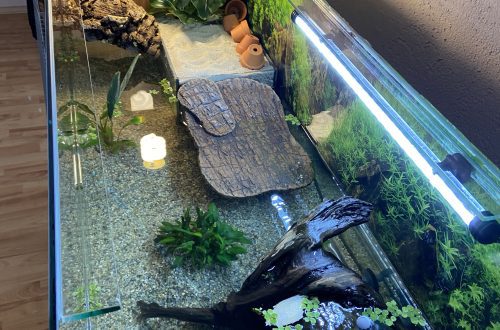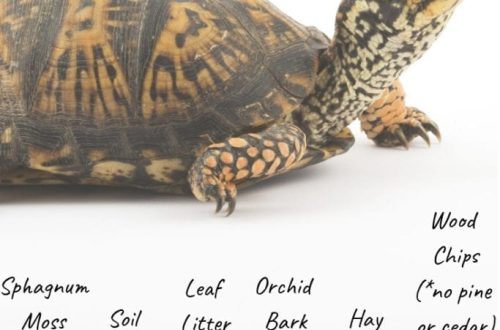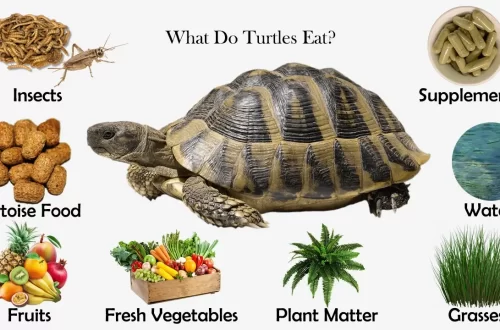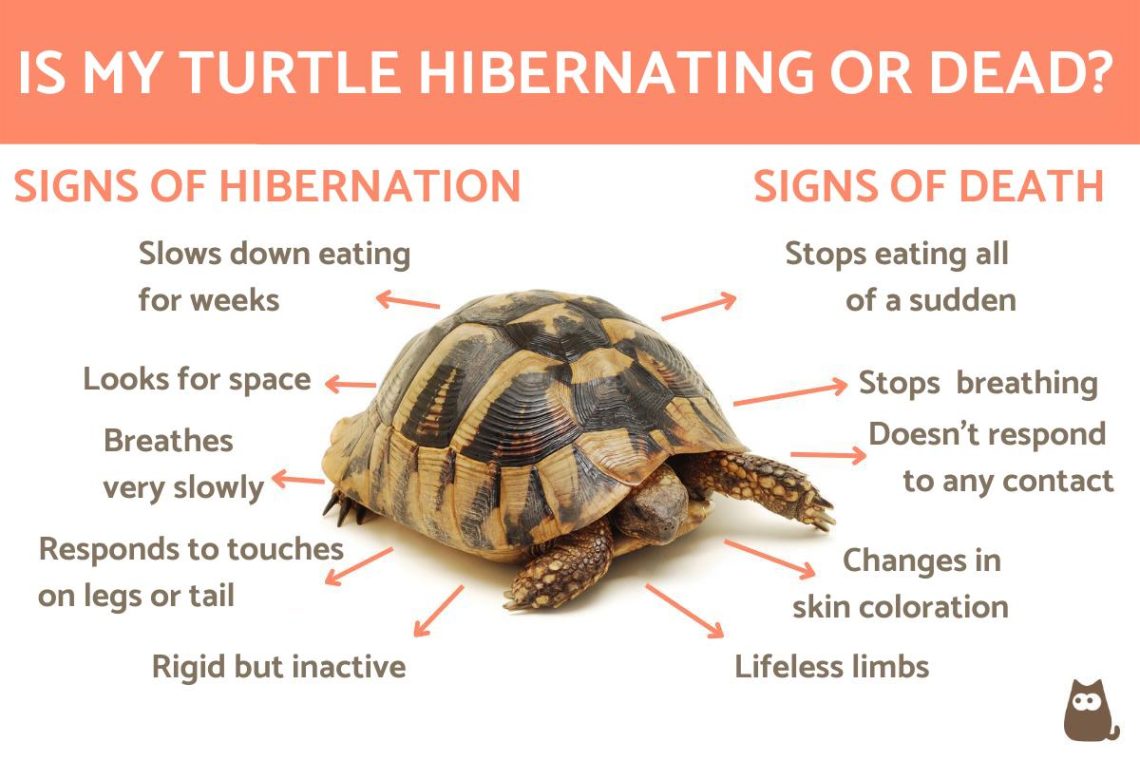
Hibernation of turtles at home: how and when turtles hibernate (photo)
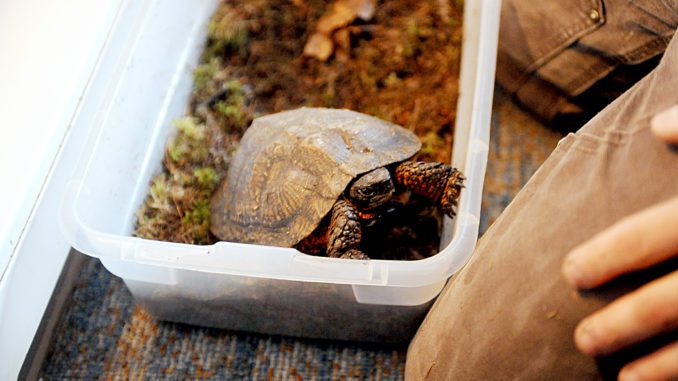
Hibernation or anabiosis is a physiological state of mammals and reptiles, necessary to maintain the life of an animal in adverse conditions. In the wild, turtles go into winter and summer hibernation, waiting in the ground for extremely low or high temperatures. Decorative reptiles that live year-round under comfortable conditions may not hibernate all their lives. Owners of exotic pets need to know why a pet turtle can sleep for a long time, and be able to accurately identify signs of hibernation.
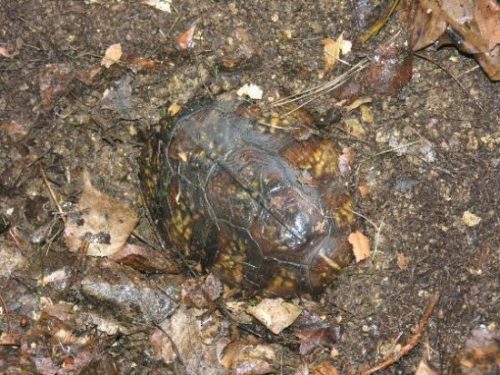
Contents
Do ornamental turtles need to hibernate?
Hibernation or wintering of wild turtles falls on the period of lowering the air temperature to + 17-18C and shortening daylight hours. Thanks to the anabiotic state, reptiles calmly survive several unfavorable months of the year. Against the background of hibernation, the sexual cycles of females and males are aligned, which is necessary for further mating and procreation. Anabiosis contributes to an increase in the life span of animals and the regulation of hormones.
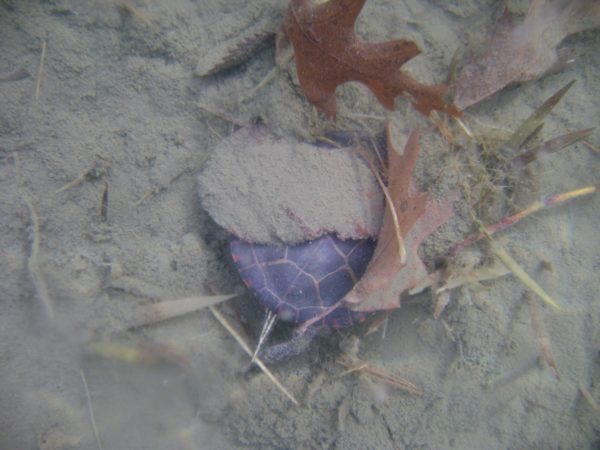
Veterinarians unanimously believe that if a pet reptile is not planned to be used for breeding, it is not worth giving or purposefully hibernating a pet.
Failure to comply with the conditions of wintering or the introduction of a sick animal into suspended animation is fraught with the development of complications or the death of an exotic animal. At home, turtles hibernate in late autumn, in October-November, when there is a decrease in the length of daylight hours and a decrease in air temperature outside the window to + 10-15C.
With a fluorescent and ultraviolet lamp, maintaining a high air temperature in the terrarium and a balanced diet, the reptile can stay awake all year round.
Newly acquired turtles may have a hibernation reflex, in which case it is necessary to correctly send the animal for the winter.
What should be done to prevent the turtle from hibernating?
You can prevent the turtle from hibernating by simply increasing the air temperature in the terrarium and aquarium to a value of + 30-32C; for aquatic turtles, the water in the aquarium should be at least + 28C. It is imperative that light sources work for 10-12 hours so that the pet has enough heat and light. If at the end of autumn the turtle shows signs of preparing for hibernation, it is recommended that the animal be given an injection of a vitamin preparation.
The pet should receive a balanced diet in sufficient quantities throughout the year so that the animal does not have to go into an energy-saving state. Land turtles are advised to bathe at least 1-2 times a week. Hygienic procedure stimulates the intestines and increases the overall tone of the body. When maintaining optimal conditions for keeping and feeding, the reflex of transition to suspended animation disappears in reptiles with the onset of cold weather.
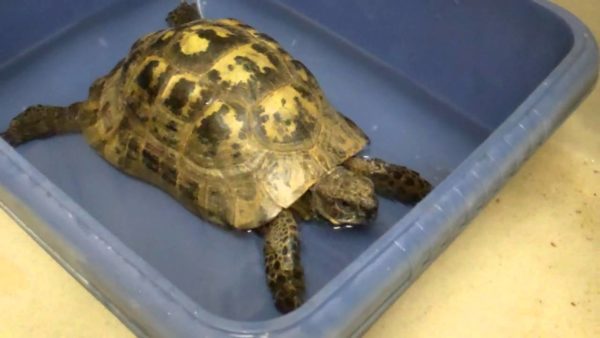
hibernation signs
Hibernation of turtles at home should occur under certain temperature and humidity conditions, otherwise there is a high probability of illness or even death of the animal during wintering. You can understand that the turtle is going to hibernate by changing the behavior of a four-legged creature:
- initially, the pet’s appetite decreases, this is due to a decrease in temperature in nature and the inability to obtain food;
- wild turtles hibernate in moist sand, which prevents moisture from evaporating from the animal’s body. At home, the reptile behaves like its relatives: it looks for a secluded corner, digs wet soil with its paws, trying to dig in;
- anabiosis proceeds with a decrease in vital processes and energy conservation, so the movements and reactions of the reptile slow down.
You can understand that a turtle is hibernating by the following signs:
- the animal looks asleep: the head and limbs are retracted into the shell, the eyes are closed;
- the pet does not move and does not eat;
- the eyes of the turtle during hibernation are moderately convex;
- breathing is superficial, almost imperceptible.
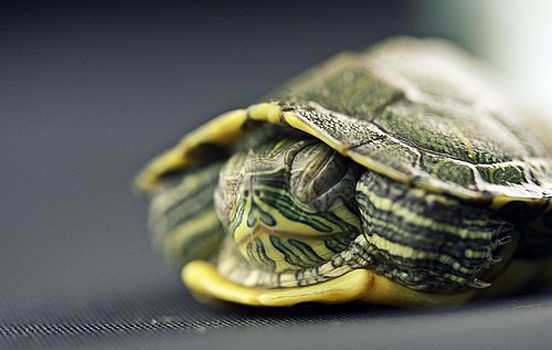
Sometimes owners start to panic when they find an immobilized pet. In order to avoid irreparable errors, it is necessary to know what an animal looks like in hibernation, and how to determine the death of a turtle.
To do this, you need to do the following:
- bring a mirror to the nose of a reptile, the glass will fog up from the breath of a sleeping animal;
- put a cold spoon on the turtle’s eyes, the live pet should react and open its eyes;
- pay attention to the shape of the eyes – a sleeping turtle has bulging closed eyes, a dead animal has sunken eyes;
- the turtle hibernates with its limbs and head retracted; in a dead reptile, the limbs and neck hang lifelessly outside the shell.
If it is clear from the behavior of the reptile that the animal is leaving for the winter, it is necessary to prepare optimal conditions for it and properly care for it, otherwise the beloved pet may die during hibernation.
Preparation for wintering
Adult tortoises sleep for 4-5 months in winter, 4-week hibernation is enough for young individuals. If the reptile began to eat worse in late autumn, tries to hide in a dark corner, lies down in dug holes in the ground, it is necessary to show the turtle to the herpetologist. Such symptoms may signal the onset of a serious illness that requires urgent treatment. When confirming the health of the animal, it is necessary to prepare the pet for the state of suspended animation:
- for 4-6 weeks, feed and water the reptile abundantly;
- 2 weeks before the transfer, hibernation should be transferred to hunger so that the intestines have time to digest the nutrients received;
- in the last 2 days, the land tortoise must be bathed in a warm bath to empty the intestines;
- during the week, gradually shorten the duration of the lamps, reduce the temperature in the terrarium and aquarium to 20C.
A turtle prepared for hibernation is gradually transferred to the wintering regime. If the turtle has already hibernated, it also needs to create optimal conditions.
A freshwater turtle is transplanted into a small aquarium with sand poured to the bottom 10 cm high and a minimum amount of water, the animal burrows into the ground during hibernation, as in a hole. Cleaning systems for the wintering period should be turned off.
The land turtle is placed in a plastic or cardboard container with holes, lined with sphagnum or moss to maintain the necessary humidity of the reptile’s body. It is permissible to keep the reptile in moist soil covered with bark and leaves.
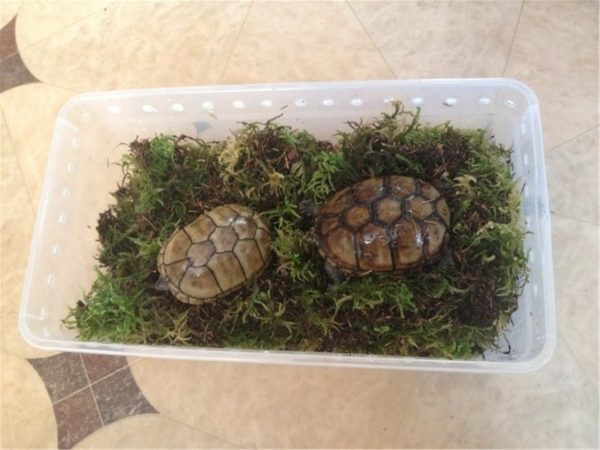
How to care for a reptile during hibernation
Reptiles sleep in winter at a temperature of 8C, so it is necessary to prepare a room with high humidity and a temperature not higher than 6-10C. It can be a basement, a cellar, a summer veranda. In the conditions of an apartment, it is allowed to keep turtles in a state of suspended animation in a refrigerator without food, in which case it is necessary to open the door of the household appliance for 10 minutes daily to circulate air.
A prepared aquarium with a freshwater turtle or a container with a land reptile should not be immediately lowered into the basement in order to avoid hypothermia and the development of colds. Within 10 days, it is necessary to rearrange the containers with animals in rooms 2-3 degrees lower than the previous one: for example, a couple of days on a tiled floor at 18 degrees, 3 days near the balcony at 15-16C, 2 days on a cold veranda at 12-13C , then for the entire wintering period in the basement at 8-10C. The temperature in the room with animals should not be allowed to drop below +1C, at 0C the animals die.
It is highly forbidden for a turtle to hibernate! An animal without harm to its own health must survive suspended animation at a low temperature and a decrease in all life processes. When a reptile winters in a warm environment, the kidney tissue is poisoned by the produced uric acid, which is not excreted in the urine. As a result of the destruction of the kidney parenchyma, metabolic disorders develop that can cost the life of a pet.
During wintering, it is necessary to carefully weigh and check the condition of the turtle shell. If the pet loses more than 1% of its mass per month or the activity of the reptile is observed at a temperature of + 6-10C, it is necessary to stop hibernation. Most often, adult turtles are sent to spend the winter in November, so that the pets wake up by mid-February, when daylight hours are already lengthening.

It is necessary to bring the reptile out of hibernation gradually, increasing the temperature to 10-30C within 32 days. Long baths in warm water or chamomile decoction help the turtle wake up. Appetite in reptiles after wintering wakes up only on the 5-7th day. If after a rise in temperature and taking warm baths the animal does not wake up, you should immediately consult a doctor.
The transfer of a reptile to wintering is a rather complicated process, which, if the regime is not observed, is fraught with the development of complications up to death. While maintaining optimal conditions of detention and high-quality feeding, ornamental turtles do well without hibernation.
How turtles hibernate at home
2.8 (55.38%) 13 votes



